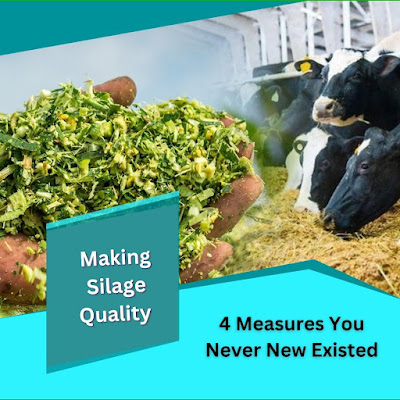Hay vs. Silage: Which One Is Better?
Some say hay, others
don’t say ho, but Silage for Animals.
Since the creation of silage, people have been arguing about which one of the
feeds is better? You see, when it’s about food, like most other things in life,
the natural, the better. What you feed your cattle has a direct effect on
health and the byproduct.
You commonly have a few
options to feed your livestock. One of those options is Sugarcane
Silage Punjab. Silage is a preserved
pasture that allows you to provide your cattle continuously when grazing is not
an option. So, why is silage becoming popular over the years? And, how does it
compare to hay? As Silage Agro, Punjab Silage Private Limited will discuss it today.
What is Hay?
Hay is grass, herbs, or
other herbaceous plants that we cut and dry to store as animal fodder, commonly
for grazing animals. Of course, we raise livestock, such as cattle, horses,
goats, and sheep. But we can also feed it to smaller domestic animals such as
rabbits and guinea pigs.
What is Silage?
Simply put, silage is
pickled pasture or fodder that we fermented to feed cattle or sheep during dry
and drought seasons. We at Silage Agro use crops such as corn, sugarcane, and
wheat, cut, ferment, and compress these crops until feed-out
Why do farmers make Silage?
The process of making
silage is much more complex than simply cutting and drying hay, which leads us
to the question, why should you make silage? What are its benefits?
We store silage using a
handful of moisture, preserving a better percentage of nutrients than a dry
storage option. But, you should remember that the silage-making process doesn’t
add any nutrients, but it works well in storing existing nutrients. Therefore,
it helps your cattle and sheep stay healthy and robust during dry seasons in
general.
In addition, the
essentiality of silage is in its energy. Therefore, it frequently works like a
high-energy supply of animals such as cows. Fortunately, a little silage goes a
long way. Consequently, it makes it an excellent choice for baby-feeding dairy
animals.
Silage vs. Hay: the discussion
Both silage and hay are
well-known products for you to feed your cattle, especially during winter when
cattle don’t have the option of grazing. Both are made up of grass, and we
consider both as a way to preserve forage.
However, despite
underlying similarities, there are significant differences between the two. The
general difference between hay and silage is that hay is cut and dried grass
that we use as fodder. On the other hand, silage is fermented and stored in a
bunker before use as feed. Here are some more differences between both.
●
Hay has a moisture content of approx. 12% and silage’s moisture
content is between 40-60%, meaning it stores more nutrients.
●
Hay is mowed, dried, and stored in bales, while silage is
tightened in air-dried conditions without drying, meaning that the latter will
last longer.
●
Animals do not digest hay but easily digest silage, offering
more nutrition.
●
Hay is stored in a bale, while Corn
Silage Bales are covered with
air-tight plastic wrap, which makes silage smell fresh.
●
Plus, who doesn’t want to feed on excellent smelling silage,
which tastes like heaven?



Comments
Post a Comment